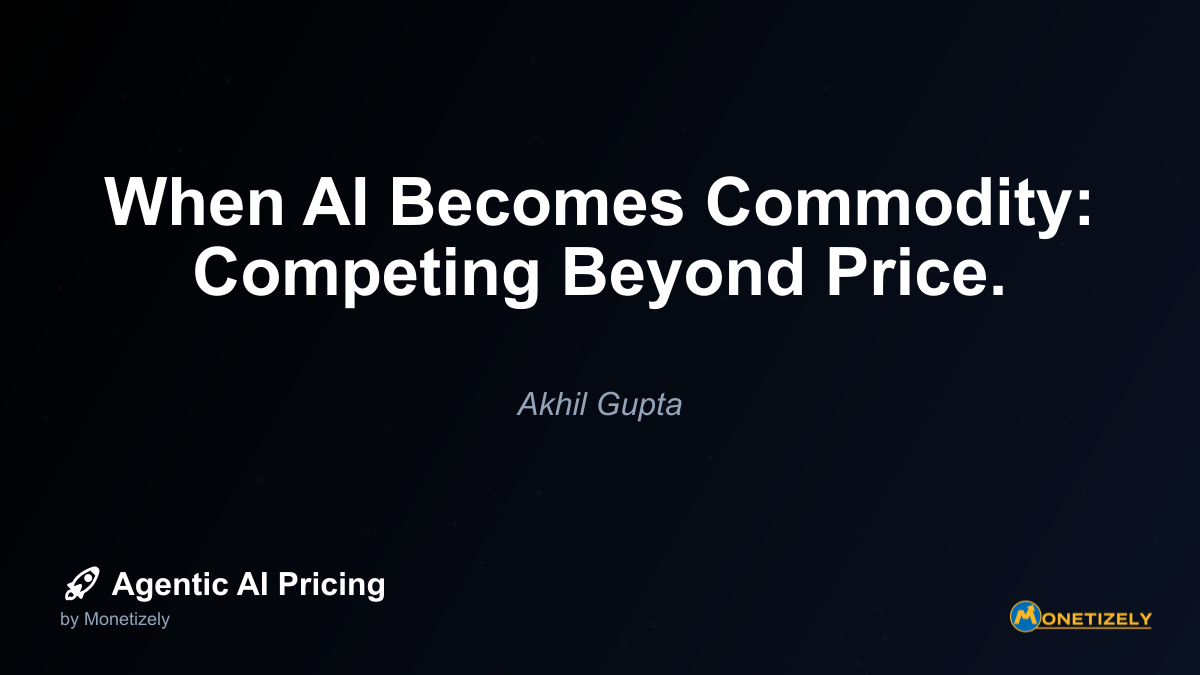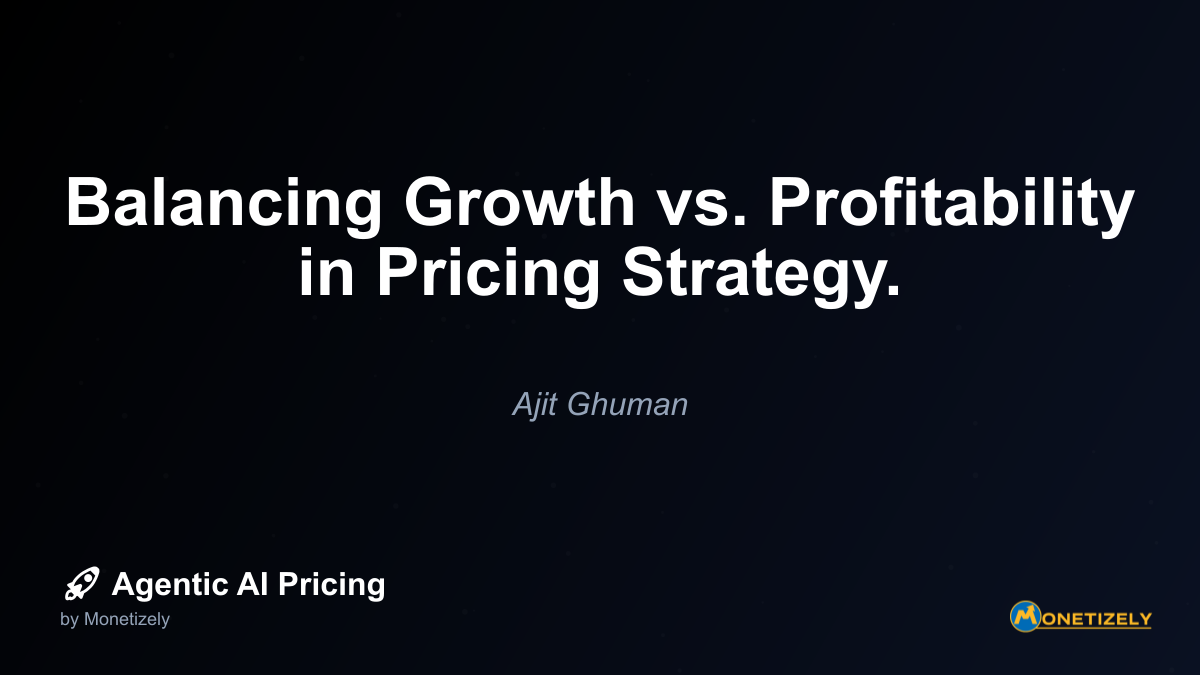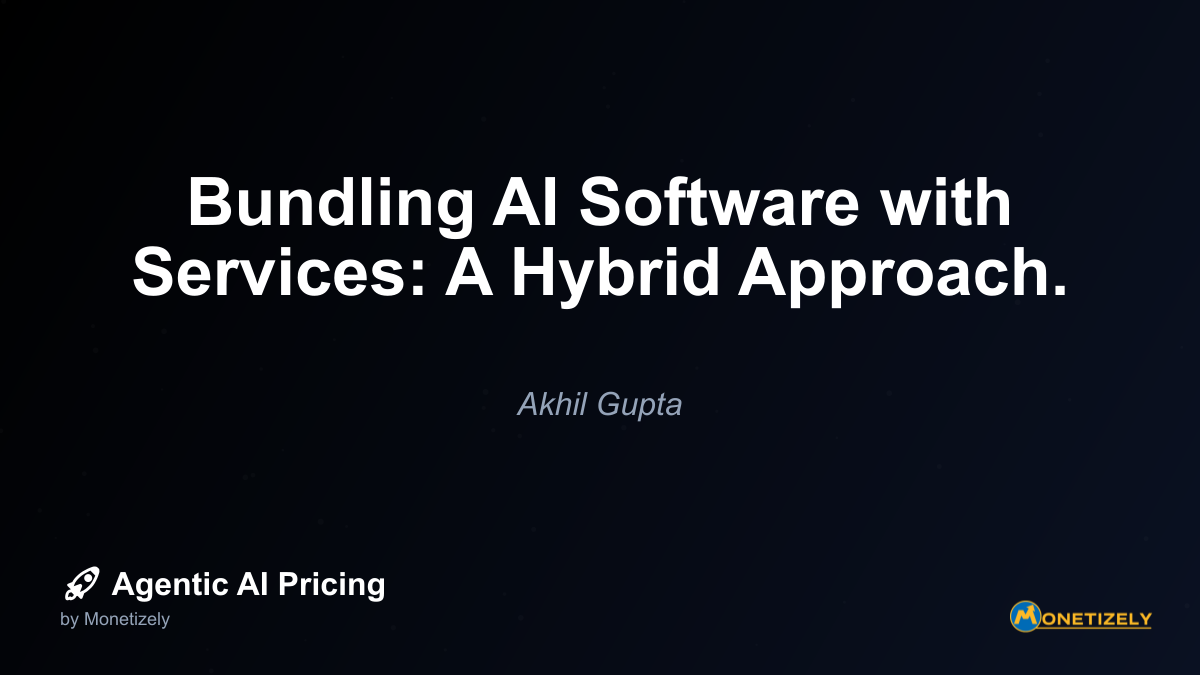· Akhil Gupta · Strategy & Planning · 7 min read
When AI Becomes Commodity: Competing Beyond Price.
AI and SaaS Pricing Masterclass
Learn the art of strategic pricing directly from industry experts. Our comprehensive course provides frameworks and methodologies for optimizing your pricing strategy in the evolving AI landscape. Earn a professional certification that can be imported directly to your LinkedIn profile.

6. Customization and Flexibility
While commoditized AI offers standardized capabilities, businesses can differentiate by providing exceptional customization options that adapt to specific customer needs. This approach transforms a commodity product into a tailored solution.
Key differentiation tactics:
- Develop modular architectures that support flexible configuration
- Create tools that allow customers to fine-tune AI behavior
- Offer professional services for advanced customization needs
- Build frameworks for customer-specific model training and adaptation
Pricing implication: Customization enables tiered pricing based on configuration flexibility, with premium tiers offering greater adaptation capabilities.
7. Value-Added Services
Surrounding commodity AI capabilities with high-value services creates differentiation that transcends the core technology. These services transform the customer relationship from transactional to consultative, reducing price sensitivity.
Key differentiation tactics:
- Offer implementation consulting and best practices guidance
- Provide ongoing optimization services to maximize ROI
- Create training programs that build customer capability
- Develop analytics and insights that enhance the value of AI outputs
Pricing implication: Value-added services enable bundle pricing strategies that combine commodity capabilities with premium services at attractive overall price points.
Practical Implementation: The Differentiation Roadmap
Transitioning from technical differentiation to value-based differentiation requires a structured approach. Consider this four-phase roadmap:
Phase 1: Differentiation Audit
Begin by honestly assessing your current competitive position:
- Where do your AI capabilities stand in the commoditization timeline?
- Which differentiation strategies align best with your organizational strengths?
- What customer segments would most value your potential differentiation areas?
- How do competitors currently position themselves beyond technical capabilities?
This audit provides the foundation for your differentiation strategy, identifying the most promising avenues to pursue.
Phase 2: Value Proposition Redesign
Based on your audit findings, reimagine your value proposition to emphasize non-commodity elements:
- Reframe messaging to highlight differentiation areas rather than technical capabilities
- Develop new product/service offerings that reinforce your differentiation strategy
- Create customer-centric stories that demonstrate the value of your differentiation
- Test new value propositions with existing customers to validate their appeal
This redesign shifts the conversation from “what our AI can do” to “how our solution creates unique value.”
Phase 3: Pricing Model Evolution
With a differentiated value proposition in place, evolve your pricing model to reflect your new positioning:
- Transition from capability-based pricing to value-based or outcome-based models
- Create tiered offerings that separate commodity capabilities from differentiated elements
- Develop pricing structures that reward customer behaviors that strengthen your differentiation
- Consider subscription models that bundle commodity capabilities with premium services
This approach aligns your pricing strategy with your differentiation strategy, ensuring they reinforce rather than contradict each other.
Phase 4: Go-to-Market Transformation
Finally, transform your go-to-market approach to emphasize your differentiation:
- Train sales teams to sell value rather than features
- Develop marketing content that highlights differentiation areas
- Create customer success programs that reinforce your unique value
- Build partner ecosystems that extend and enhance your differentiation
This transformation ensures that every customer touchpoint reinforces your differentiated position in the market.
Case Studies: Differentiation Success Stories
Case Study 1: Vertical AI Specialization
A generalist AI document processing company faced increasing competition from commodity solutions. Rather than competing on price, they pivoted to focus exclusively on legal document processing, embedding domain expertise that generic solutions couldn’t match.
Key actions:
- Hired legal experts to train specialized models
- Developed pre-built templates for common legal documents
- Created compliance-focused features specific to the legal industry
- Built integrations with popular legal practice management systems
Results:
- Increased average deal size by 65%
- Reduced price sensitivity in sales conversations
- Improved retention rates from 72% to 94%
- Established thought leadership position in legal AI
Case Study 2: Experience-Led Differentiation
A mid-sized AI chatbot provider struggled to compete with larger, better-funded competitors offering similar technical capabilities. They repositioned around user experience excellence, making their solution significantly easier to implement and manage.
Key actions:
- Invested heavily in UX research and design
- Created no-code tools for bot training and management
- Developed visual analytics that simplified performance monitoring
- Built an intuitive testing framework for non-technical users
Results:
- Maintained premium pricing despite commodity pressure
- Reduced implementation time from weeks to days
- Increased user adoption rates by over 200%
- Won multiple design awards that reinforced their differentiation
Case Study 3: Ecosystem Advantage
A small AI recommendation engine provider faced existential threat from larger competitors with more advanced algorithms. They pivoted to build an extensive ecosystem of complementary tools and services.
Key actions:
- Created open APIs that encouraged third-party development
- Built a marketplace for specialized recommendation models
- Developed certification programs for implementation partners
- Acquired complementary companies to expand ecosystem breadth
Results:
- Transformed from product to platform business model
- Created significant switching costs through ecosystem lock-in
- Attracted partners that extended their capabilities without internal investment
- Increased valuation multiples by positioning as a platform rather than a product
Preparing Your Organization for the Differentiation Pivot
Successfully differentiating beyond price requires organizational alignment and capability development. Leadership should focus on:
Cultural Transformation
- Shift from technology-centric to customer-centric thinking
- Reward innovation in non-technical differentiation areas
- Encourage cross-functional collaboration to identify differentiation opportunities
- Embrace a solutions mindset rather than a product mindset
Talent Evolution
- Hire domain experts who understand customer problems deeply
- Develop customer success capabilities focused on value realization
- Build design thinking skills throughout the organization
- Recruit marketing and sales talent with experience selling value rather than features
Metrics Redefinition
- Move beyond technical performance metrics to customer success metrics
- Track differentiation-specific KPIs (e.g., integration speed, customization depth)
- Measure price premium sustainability over time
- Monitor competitive positioning on differentiation dimensions
Organizational Structure
- Create dedicated teams focused on differentiation areas
- Establish cross-functional working groups to identify new differentiation opportunities
- Develop centers of excellence around key differentiation strategies
- Build partnership teams to extend differentiation through ecosystem development
The Pricing Strategy Implications of AI Commoditization
As AI capabilities commoditize, pricing strategies must evolve to reflect new sources of value:
From Feature-Based to Value-Based Pricing
Traditional feature-based pricing becomes unsustainable as features standardize across competitors. Value-based pricing—setting prices based on the economic value created for customers—offers a more sustainable approach in commoditized markets.
Implementing value-based pricing requires:
- Robust methodologies for quantifying customer value
- Segmentation approaches that identify varying value perceptions
- Sales enablement tools that support value-based conversations
- Pricing structures that align with value delivery mechanisms
From Product to Solution Pricing
As differentiation shifts from technology to integration, experience, and services, pricing should evolve from product-centric to solution-centric approaches. Solution pricing bundles commodity capabilities with differentiated elements to create compelling overall value propositions.
Effective solution pricing includes:
- Thoughtful bundling of commodity and differentiated elements
- Tiering strategies that allow customers to self-select based on value needs
- Optional add-ons that enhance differentiation for specific segments
- Subscription models that capture ongoing value delivery
From Static to Dynamic Pricing
The rapid evolution of AI markets demands more dynamic pricing approaches that adapt to changing competitive landscapes. Dynamic pricing—adjusting prices based on market conditions, customer segments, and competitive positioning—becomes increasingly important as commoditization accelerates.
Building dynamic pricing capabilities requires:
- Market intelligence systems that monitor competitive positioning
- Analytics capabilities that identify optimal price points by segment
- Governance frameworks that ensure pricing consistency and fairness
- Technology infrastructure that supports price experimentation and optimization
Conclusion: From Commodity Challenge to Differentiation Opportunity
The commoditization of AI capabilities represents both a challenge and an opportunity. Organizations that continue to compete primarily on technical features and price will find themselves trapped in increasingly unprofitable market positions. Those that successfully pivot to differentiation strategies beyond price will discover new sources of competitive advantage and value creation.
The key insights for executives navigating this transition include:
Anticipate the timeline: Understand where your AI capabilities sit in the commoditization cycle and plan your differentiation strategy accordingly.
Choose your battleground: Select differentiation strategies that align with your organizational strengths and customer needs rather than attempting to differentiate across all dimensions.
Align your organization: Build the capabilities, culture, and structure needed to execute your differentiation strategy effectively.
Evolve your pricing: Develop pricing approaches that reflect and reinforce your differentiation rather than undermining it.
Start now: The window for establishing differentiated positions narrows as commoditization accelerates—early movers will capture disproportionate value.
By embracing these principles, forward-thinking organizations can transform the challenge of AI commoditization into an opportunity for sustainable competitive advantage. The future belongs not to those with marginally better algorithms but to those who create compelling value propositions that transcend the underlying technology.
In a world where AI becomes commodity, the winners will be those who compete beyond price.
Co-Founder & COO
Akhil is an Engineering leader with over 16+ years of experience in building, managing and scaling web-scale, high throughput enterprise applications and teams. He has worked with and led technology teams at FabAlley, BuildSupply and Healthians. He is a graduate from Delhi College of Engineering and UC Berkeley certified CTO.
Pricing Strategy Audit
Let our experts analyze your current pricing strategy and identify opportunities for improvement. Our data-driven assessment will help you unlock untapped revenue potential and optimize your AI pricing approach.




